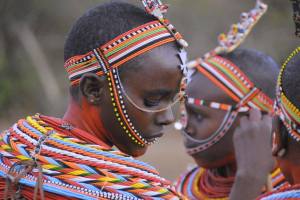‘Death is something inevitable. When a man has done what he considers to be his duty to his people and his country, he can rest in peace. I believe I have made that effort and that is, therefore, why I will sleep for eternity.’
Nelson Mandela

As you celebrate the International Day of the Girl, here are some facts about African girls to ponder! Don’t forget to make 3 people in your life aware of these issues and what they can do to help empower girls.
• Discrimination in the home is entrenched along gender roles where boys and girls internalize the gender responsibility they should play. On average, a normal working day for an African girl is between 20 to 30 hours a week.
• Approximately 140 million girls have undergone FGM and 2 million are subjected to it every year with a higher tendency of performing FGM on younger and younger girls. It is performed on infants and adult women but mostly on girls between the age of 4 and 12. The highest prevalence of FGM is found in Africa where 28 African countries practice it.
• Early marriage is most common in Sub-Saharan Africa and South Asia. Forty four percent of 20-24 year old women in West Africa were married under the age of 15 and all decisions on timing of marriage and spouse was made by fathers.
• It is often the responsibility of girls and young women to fetch water often from long distances. A study in Kenya identified that women and girls carry from 20-25 litres over 3.5 km for one or two hours daily.
• In many African countries, poverty and cultural practices often mean that it is traditional for boys and men to eat first and girls to eat leftovers. When food is scarce this can often mean females have very little to eat or nothing at all. Malnutrition will often mean that girls are anaemic which can lead to problems during pregnancy, maternal death, exhaustion and loss of productivity.
• An estimated 7.3 million young women are living with HIV/AIDS compared to 4.5million men and in Sub-Saharan Africa, 59 % of people living with the HIV virus are women.
• A young person under 15 is said to contract AIDS every 15 seconds.
• West and Central Africa accounts for the highest percentage of both girls and boys involved in child labour. This is followed by Sub-Saharan Africa, Eastern and Southern Africa.
• Approximately 1.2 million children every year are victims of trafficking internationally and within local borders.
• 80% of trafficked children are girls.
• 90% of children trafficked from West and Central Africa are girls who work as domestic workers.
• Every year 1000 girls between 14 and 24 are taken from Mozambique to work as sex workers in South Africa.
• Rape has been used as a weapon of war against millions of girls and women caught up in conflict. In Rwanda 1992-1995, it is estimated that half a million women were raped during the genocide and 67% were subsequently infected with HIV. In Sierra Leone young girls were particularly singled out for rape. Many did not survive and approximately 70 to 90% contracted HIV.
Sourcce:
Plan International
Unicef
Did you know?
• 100 million girls are missing due to female infanticide.
• 62 million girls of primary school age are out of school.
• 20 to 50% of girls have experienced sexual abuse from a family member.
• Every 3 seconds, a girl under 18 is forced or coerced to marry.
• Every year, 10 million girls under 18 are forced or coerced into marriage. 1 in 7 marries before they reach the age of 15.
• 1.2 million children are trafficked each year and 98% of those forced into commercial sexual exploitation are girls.
• The leading cause of death for young women aged 15 to 19 in developing countries is pregnancy.
• 36% of girls aged 15 – 19 in Africa and the Middle East have experienced female genital mutilation.
• By 2014, 64% of the world’s illiterate population will be female.
This is why your voice matters!
 Following a two year campaign led by international NGO, Plan International, the United Nations declared October 11, 2012 the very first International Day of the Girl Child. This year will mark the second celebration of the day on Friday 11 October.
Following a two year campaign led by international NGO, Plan International, the United Nations declared October 11, 2012 the very first International Day of the Girl Child. This year will mark the second celebration of the day on Friday 11 October.
The International Day of the Girl is an opportunity to shine the spotlight on girls’ rights and highlight gender inequalities that remain between girls and boys. Girls today still face unique challenges, that prevent them from realising their full potential, simply because of their gender.
As we count down to October 11, we’ll be running feature articles highlighting some of the challenges faced by girls around the world. On October 11, we ask you to commit to spreading the word to at least 3 people in your life who may not be aware of these injustices. Together we can help make a difference!
We leave you with the words of Malala Yousafzai, the Pakistani teenage girl who made headlines last year when the Taliban shot her for advocating for girls’ right to education, “I raise up my voice – not so that I can shout, but so that those without a voice can be heard”.
Photo credit:airwaves1
Comments